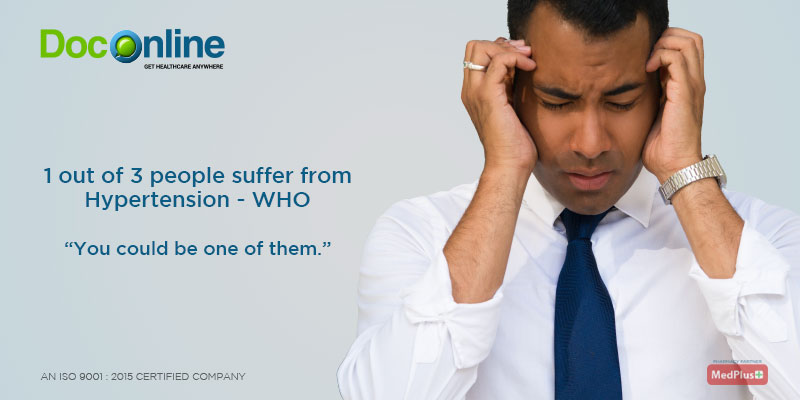Do you often suffer from headache, dizziness, blurred vision and shortness of breath? Well, if you do, the chances are that you are suffering from hypertension or high blood pressure. What exactly is high blood pressure?
According to medical guidelines, hypertension is defined as having a blood pressure higher than 140 over 90 mmHg. This means the systolic reading, which is the pressure at which the heart pumps blood around the body is above 140 mmHg (millimeters of mercury) and/or the diastolic reading, which is the state at which the heart relaxes and refills with blood is above 90 mmHg.
Thus, the long term high blood-pressure of the blood against the artery walls causes hypertension.
Broadly there are two classifications of high blood pressure – Primary and Secondary.
Primary Hypertension is most prevalent and accounts for 90% -95% of the cases. It is mainly due to nonspecific lifestyle and genetic factors.
Secondary Hypertension affects 5% to 10% of the cases. In this, people suffer from identifiable causes like chronic kidney diseases. The narrowing of kidney arteries, endocrine disorders, coarctation of aorta and use of birth controlling pills contribute to it.
The Signs and Symptoms present themselves in the form of headache at the back of the head in the morning. It is further accompanied by lightheadedness, vertigo, tinnitus, altered vision and fainting episodes. Moreover, on physical examination changes in the optic fundus can be seen by an ophthalmoscope. Among children, hypertension can be discerned through failure to thrive, seizures, irritability, lack of energy and difficulty in the breathing.
Managing Hypertension:
There are 2 types of Hypertension Management. These involve the non-pharmalogical and the pharmalogical.
The non-pharmalogical lifestyle modification includes life style modification and maintenance of normal body weight. There also needs to be a reduced intake of sodium <100 ml. Furthermore, physical activity aerobics, brisk walking, limitation of alcohol intake.
The pharmalogical aspect includes the use of angiotensin converting enzyme inhibitors and angiotensin receptor blockers. Then, there are also the beta blockers, calcium channel blockers and diuretics. Depending on case to case basis, a single drug or a combination of two or three drugs can be used.
If due attention is not given to hypertension, it can lead to serious cases like heart attack, brain hemorrhage, brain stroke and more.
Prevention is better than cure. As you work towards a healthier lifestyle with proper food intake and exercise, the quality of life and health improves. However, with the integration of technology in healthcare, now you can easily consult a doctor online or clarify your doubts by speaking with a doctor using your smart phone, web or tab from anywhere and at anytime! Why not make the most of technology, especially at a time when telehealth is there to reduce our tension? After all, it’s not just about a healthy lifestyle it’s also about leading a healthy life













